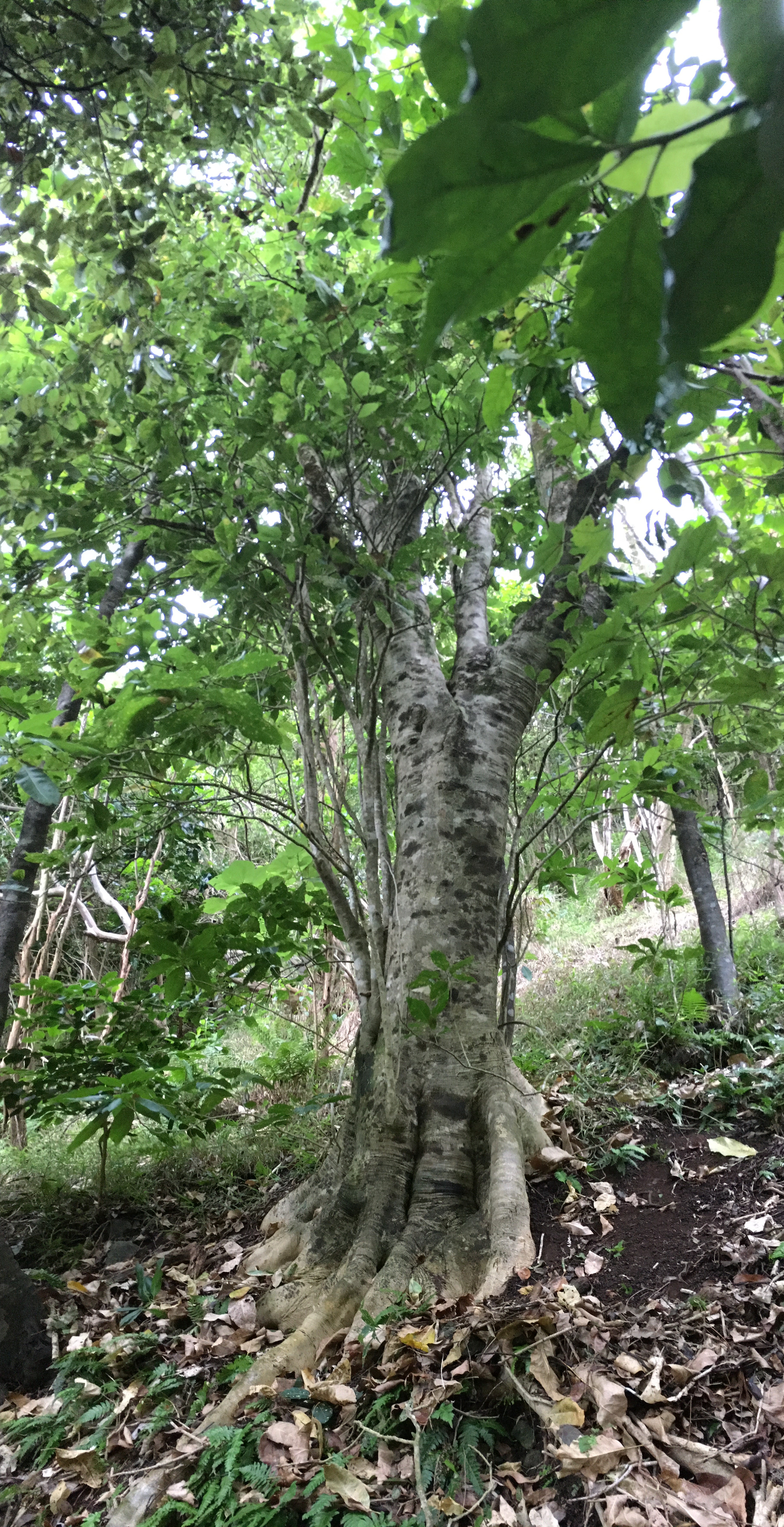Lonomea

Names
- ʻŌlelo Hawaiʻi: Lonomea
- Common Name: Soapberry
- Scientific: Sapindus oahuensis
Species Information
Lonomea are distinguishable by the rough light gray to white bark covering older branches and yellow-brown fuzz that coats younger branches. Lonomea has a white trunk that sharply contrasts its dark green leaves. Traditionally, the hard black seeds produced by Lonomea were used for medicinal purposes and strung to make permanent lei. While the fruits produced by this tree resemble dates and have a fragrance similar to figs or raisins, they are not edible. The tree’s wood was also used to make spears. The plants are monoecious, meaning that both male and female flowers are found on the same plant (Bishop Museum).
Distribution
Kauaʻi and Oʻahu
Habitat
This species is endemic to Hawaii and can be found in mesic to dry forests at elevations between 200 to 2,000 feet.
Threats
Lonomea face threats of increased development, fires, ungulate grazing, invasive species and non-native plant growth.
Photos

References & Additional Resources
Bishop Museum: Plants of Hawaiʻi: Sapindus oahuensis, https://plantsofhawaii.org/detail/%7B1E4D84CF-4283-4347-838D-26AC62A3AACA%7D
Univeristy of Hawaiʻi College of Tropical Agriculture and Human Resources (UH CTAHR): Sapindus oahuensis, https://www.ctahr.hawaii.edu/hawnprop/plants/sap-oahu.htm
Native Plants Hawaiʻi, University of Hawaiʻi: Sapindus oahuensis, http://nativeplants.hawaii.edu/plant/view/Sapindus_oahuensis/
